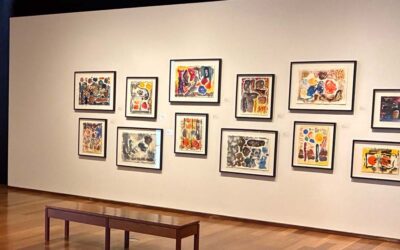5 Prompts to Prioritize Museum Digitization Projects

Rachael Cristine Woody
Below are my top 5 prompts to consider when deciding the museum’s next digitization and cataloging project.
Which objects are completely hidden?
For many museums there is still so much of the collections that are “hidden”—meaning the object is in storage and not on exhibit and/or doesn’t have an easily discoverable place online There’s hidden, and then there’s hidden. What I mean is while some objects of the group may be hidden with no digital presence, there are related, representative objects that do have a digital presence.
Similarly, there may be portions of a collection on permanent, or long-term physical exhibit, with the remaining portion of the collection area in storage with no physical or digital display. In both scenarios there is a portion of the collection on display, and so offers a representative sample for audience engagement.
If there are collection areas that are not on display in any capacity, they should be prioritized higher for museum digitization projects and cataloging in the museum collections management system (CMS).
Which objects are in danger of disappearing?
Many museum collections have objects that are in danger of disappearing. Preservation issues inherent to the object based on how it was made, the materials it’s composed of, and the conditions it’s been physically subjected to all contribute to the object’s eventual expiration date.
While eventual decomposition is inevitable there is a large disparity in when decomposition may occur. Museum collection objects should be regularly assessed for their preservation condition—and those that are in danger of no longer being used or exhibitable should be prioritized for museum digitization projects.
Which objects are most frequently used?
If objects are being pulled out repeatedly for use or if they are on exhibit for long periods of time, care should be taken to prioritize the digitization of these items. Creating a digital surrogate and making it available through the museum collections management system will help alleviate the wear and tear on the object, and will help meet the demand from audience members who can work with a digital surrogate of the object.
Which objects can provide better representation?
In order to meet Diversity, Equity, and Inclusion measures, museums are reviewing and evolving all areas of work. This should also include the work the museum prioritizes for museum digitization projects and cataloging.
Areas of the collection that may help present a more informed, accurate, and authentic account of historical events, places, and people need to be prioritized. The more these materials are available the better museum staff, historians, and general audiences can be at constructing a fuller, more representative history.
Which objects can support current projects or museum efforts?
In addition to supporting the museum mission and strategic plan, digital projects should also be evaluated for how they can support current projects and museum efforts. If there’s a new exhibit planned, a community event, or other work the museum will be engaged in that could be buoyed by digital availability of the objects involved, that work should be anticipated and prioritized.
Conclusion
Digital projects are a fantastic asset to the broader work of museums. By anticipating museum needs and finding opportunities where digital presence can support non-digital work, the museum can maximize the benefits of digitization and cataloging projects. If digital projects are pursued intentionally (with these 5 prompts in mind) they will naturally support and enrich the broader work of the museum.

Rachael Cristine Woody
Rachael Cristine Woody has helped with museum cataloging and collections management at institutions like the Freer|Sackler Museum of the Smithsonian Institution and the Oregon Wine History Archive at Linfield College. Read more of Rachael’s posts on museum collections and management. See also more on Lucidia’s two solutions for museum collections management and digitization projects.
Similar Posts
From Preservation to Resilience: An Introduction to Building Resilient Digital Collections
Preserving a digital collection is a job that is never done. But what if we shifted our focus from preservation to building digital resilience?
Client Spotlight: MacLaren Art Centre Goes Beyond Collections Care to Access and Growth
“As our needs evolved, it became clear that our existing CMS was no longer working for us. Not only do we need to perform basic collections care, we need a system that will support public access, enable growth, and match our innovative strategies.”
Museum Collections Online: Digital Storytelling Blog Series Roundup
An overview of 10 blog post series that highlight how museums can leverage online collections and digital storytelling platforms, strategies, tools, and best practices.
How Museums Can Broaden Access and Improve Accessibility with Digital Storytelling
Museum expert Rachael Cristine Woody explains how digital storytelling expands access and improves accessibility of museum collections with inclusive multimedia formats.





Leave a Comment
Comments are reviewed and must adhere to our comments policy.
0 Comments